Important events and systems in European Societies during the 1600’s
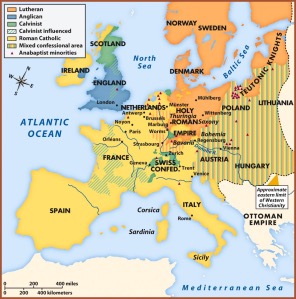
Robb Schultz, “Europe leading into the 17th century (1600’s)”Image Source
The Rise of Feudal Societies
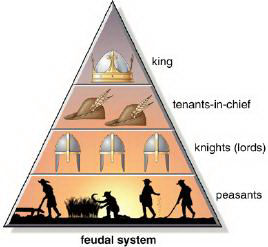
Author Unknown, “Feudal System Research Papers”, Paper Masters, (Uploaded: Unknown), (Accessed: 11 June 2020) Imasge source
During the 16th century Europe governed society based on the Feudal System, where land ownership determined one’s wealth and position in society.[1] This system was introduced by William I, after he won the Battle of Hastings on 14 October 1066. King William I realized that he would not be able to rule and control the entire country on his own.[2] He concluded to maintain control of England he had to divide land among trustworthy and loyal people who could provide him with the services and resources he needed to govern over the country.[3] The feudal system was implemented as a solution. This system declared that the land belonged to the king, which he could divide between the church and lease out land to subjects who swore an oath of loyalty to him.[4]
The pyramid above gives a visual representation of how the feudal system worked. At the top of the feudal system the king ruled the country, who leased out land to trustworthy, wealthy and powerful tenants in chiefs, otherwise called “barons”.[5] These barons were given power and land, which were called manors. Barons were also given the title “Lord of the Manor”. The Lord of the Manor had to employ knights to protect their king, the country and the land given to them. Peasants were also employed to produce essential goods, such as food and clothing. The knights were wealthy and owned land they could give to peasants to farm and produce necessary products. Impoverished peasants made up the bottom of the feudal system and it was their duty to provide cheap labour for the king, lords and knights.
The Role of Women
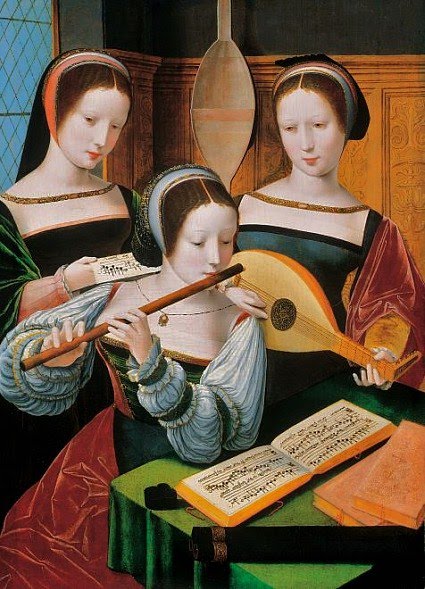
Barbara W. Sarudy, “1500 – 1600’s – Women making music and a few flutes” Image Source
During the 16th century European women were mostly uneducated, managers of their household who focused on the needs of their family.[6] Unmarried women were viewed as odd and were often forced to become nuns.[7] Women were not allowed to be involved in politics, trade, the law or as a leader in the church.[8] Investing in the education of women were also frowned upon as Europeans believed that it would take away a woman’s innocence. Yet, women could write autobiographies and study the Bible.[9] Woman who were opposed to this patriarchal system, which gave them limited human and legal rights, were excluded from society.
Travel and Trade
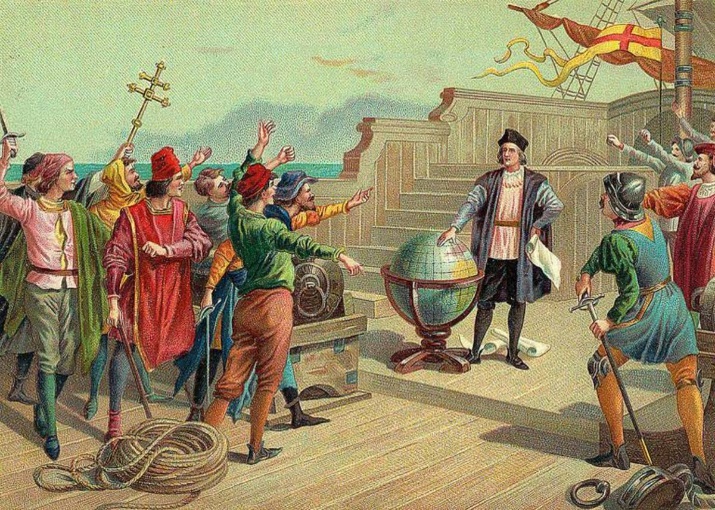
Unknown, “Exploration”, History, (Uploaded: Unknown), (Accessed: 18 June 2020) Image Source
At the start of the 15th century sailors had limited knowledge of the world since they continued to use maps based on the cartography of Ptolemy, a geographer who died in 168CE.[10] Europeans had already discovered and documented Western Asia and the Mediterranean, but knowledge of Africa was limited and the Americas were still to be discovered. Travelling was also limited due to poor ship designs and primitive navigational techniques. However, during the 15th century this started to change as technology improved. The Portuguese created the ocean-going caravel with new navigation instruments and techniques that enabled them to determine how far north or south they had journeyed by measuring the height of the sun at noon and the height of a star at night.[11]
The Black Death
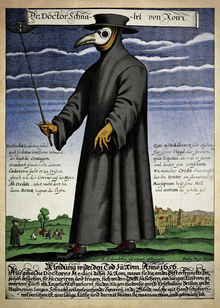
Author Unknown, “The Black Death”, Wikipedia, (Uploaded: Unknown), Accessed: 11 June 2020)Image Source
The Black Death, otherwise known as the Black Plague or the “Great Mortality”, was a deadly bubonic plague that struck Europe, Asia and the Middle East from 1347 to 1352.[12] The name of the illness was derived from a specific symptom of the disease called acral necrosis, which refers to the sufferer’s skin turning black due to subdermal haemorrhages.[13] Other symptoms included swelling of the armpits, neck and groin and coughing blood.[14] The Black Death was a deadly disease that would usually claim its victims lives within five days. Approximately, 60% of the European population died from the Black Death, as the population was reduced to a meagre 30 million from the original 80 million people.[15]
The cause of the Black Death was attributed to fleas who would feed on animals like black rats and become infected with the bacterium, Yersinia Pestis.[16] The same fleas would then infect humans with this deadly bacterium that caused the Black Death.[17]
The Consequences of the Black Death
1. Depopulation
Historians indicate that between one third to one half of the European population died between 1348 to 1350.[18] Rural areas where there were low populations were the least affected as isolation halted the spread of the disease. The larger cities, however, were vulnerable to disease transmissions due to close living quarters, dense population and unsanitary living conditions. Cities were forced to create mass graveyards for burial and many towns lost the majority of their population.
2. The Jewish Scapegoat
During the Black Death people became increasingly suspicious of outsiders. Jews were often accused of poisoning water and the air as Europeans had not yet established the cause for the bubonic plague.[19] This Jewish persecution and suspicion also intensified due to religious differences and Jews living separately in Jewish ghetto’s apart from Europeans. As a result of this Jewish suspicion, Jews often became victims of massacres or were banished from cities. By 1351 more than 350 massacres had occurred, while 60 large and 150 smaller Jewish communities had been exterminated.
3. Economic Changes
Prior to the Black Death Europe was overpopulated and lacked enough resources to feed the entire population. After the Black Death had claimed the lives of over a half of the European population the competition for resources, such as food and land declined. Economic historians believe that the roots of capitalism could be found in the Black Death as workers who were previously cheap labourers could compete for higher wages and freedom after the plague. The decline in population led to rise in per capita wealth.
4. Political Reaction
In an effort to stop the spread of the Black Death most European governments prohibited exportation of food while setting price controls on essential food, such as grain, and outlawing large-scale fishing.[20] These rules proved problematic as they were either unenforceable or led to a shortage to buy grain. England particularly suffered from crop failures and were unable to import grain from France.
5. Cynicism and Religion
Many Europeans believed that God had sent the Black Death as punishment. People became increasingly aware of their mortality and many became obsessed with the idea of death. However, as the Black Death continued to spread Europeans became increasingly cynical about religion as the Catholic Church could not cure their symptoms as they promised they would do.[21]
6. Death in the Arts
After the Black Death European artists constantly portrayed morbid scenes.[22] Skeletons, suffering, death, darkness and depression was constantly depicted in European paintings during the 1350’s.
7. Alchemy
Europeans became increasingly aware alchemy could not heal them from the Black Death.[23] This led to a move away from alchemy to Europeans buying spells, charms and liquor which they were told would help them heal from the Black Death.[24]
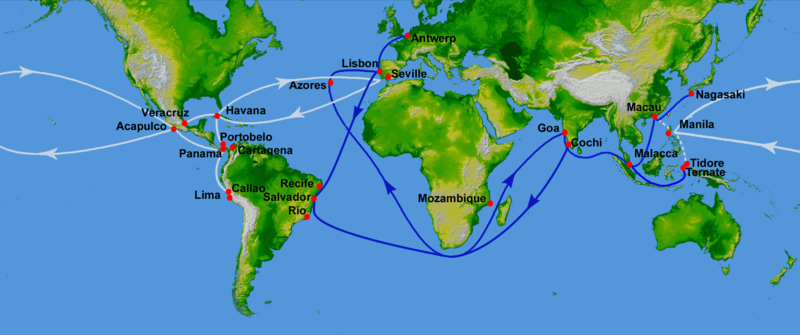
World Topography, “16 century Portuguese Spanish trade routes”, Commons Wikipedia, (Uploaded: 15 May 2020), (Accessed: 18 June 2020) Image Source
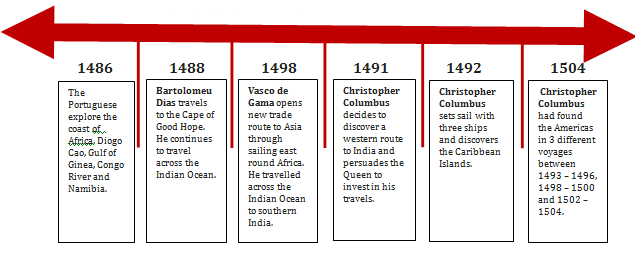
The European Age of Discovery.
For the origin of the source, view the footnote below [25]
One of the major highways for trade was the Baltic Sea during the Middle Ages.[26] The Baltic Sea enabled Europeans to travel and trade with Germany, Sweden, Russia, Finland, Poland, Denmark, Scandinavia and the rest of Europe.[27] The German Hansa merchants mostly traded fish, softwood, timber, hemp, grain and flax. Russia and Finland traded honey and fur, tar and amber.[28] After the European Age of Discovery Europeans were able to travel and trade with other countries such as Africa, Asia and America. At the start of the 1600’s Dutch and English trading companies were established that had exclusive rights to conduct largescale trade with various parts of the world, including Asia, Africa and the Americas. [29]
Trading Companies Established during the 1600’s
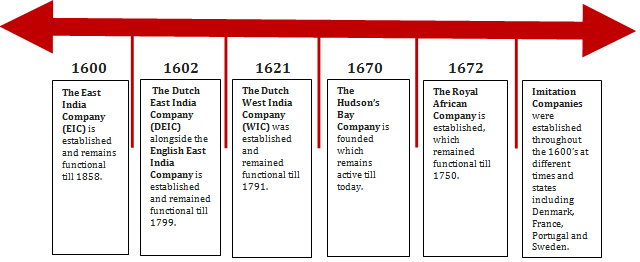 Trading Companies Established during the 1600’s.
Trading Companies Established during the 1600’s.
For the origin of the source, view the footnote below [30].
The Renaissance
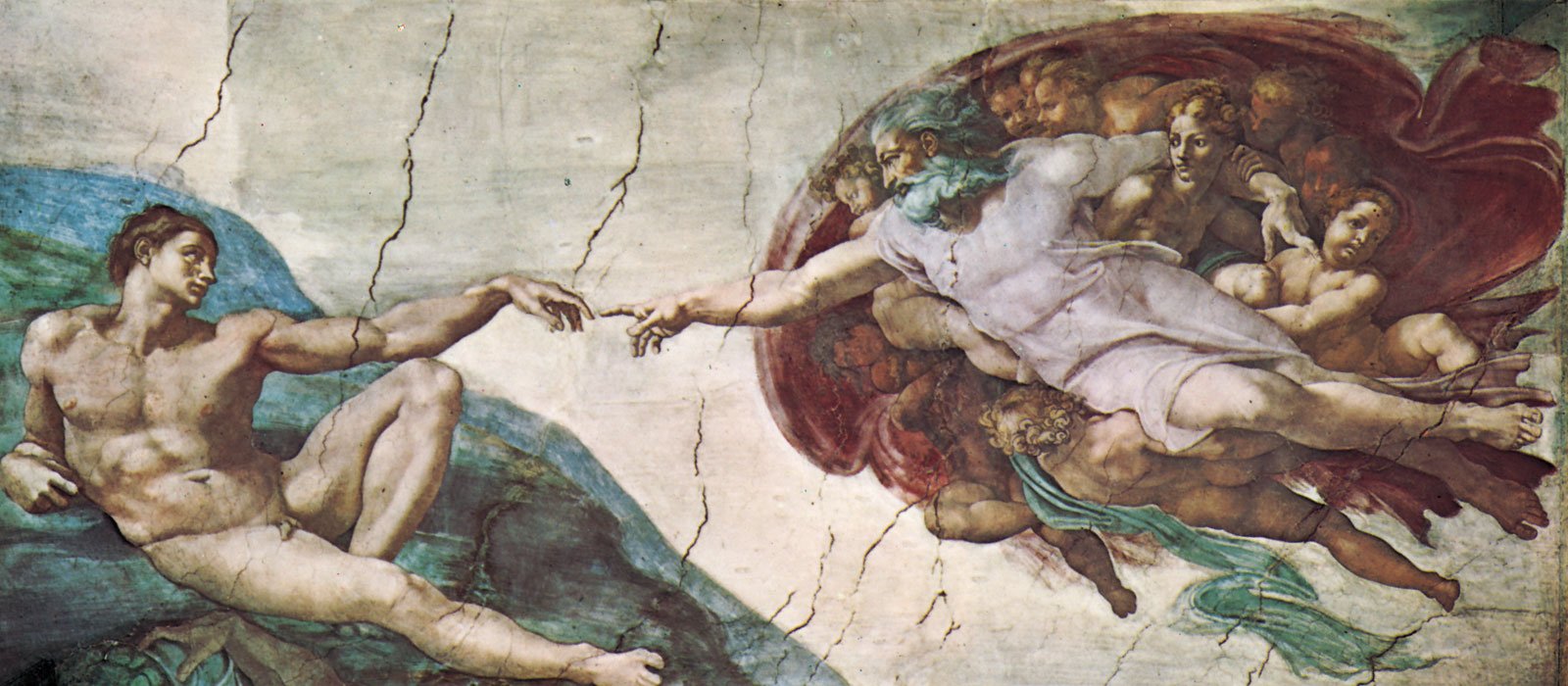
Unknown, “Renaissance Art”, Encyclopaedia Britannica, (Uploaded: 5 March 2020), (Accessed: 11 June 2020). Image Source
Historians, such as Abernethy has described the Renaissance, which occurred between the 15th and 17th century, as a period of transition from the ancient to the modern world.[31] The French term renaissance translated into English refers to “rebirth”.[32] The Renaissance, which brought innovation and change in art, science and technology, found its roots in a “proto-renaissance” which started in the 13th century and was based on S. Francis ideas who deviated from Christian theology and focused on the beauty and spirituality of nature.[33] His ideas inspired Italian artists to view and portray the world differently. After the Black Death people also started to question the churches’ teachings and focus on the afterlife.[34]Having survived one of the world’s greatest tragedies, people started to develop humanist philosophies, focused on enjoying the present moment. The Renaissance is remembered for the new ideas, technologies and art it produced. Ten characteristics of the Renaissance is listed below:
1. The development of humanist ideologies focused on scientific inquiry and finding fulfilment in nature rather than following the Catholic Church’s teachings about God.[35]
2. Artists were inspired by Greek and Roman art, which portrayed elements of the humanist philosophy with a three dimensional and realistic look.[36] Painters moved away from portraying religious themes to painting landscapes and people.[37]
3. Literature moved away from religion and started to emphasize humanist themes and classical ideals.[38]
4. The Printing Press developed by Johannes Gutenberg in 1440 enabled people to print and widely disseminate literature for the first time.[39]
5. New musical instruments were developed, such as the violin family and the printing press enabled music sheets to become widely disseminated.[40]
6. The fall of feudalism and the rise of a middle class and capitalist market economy.[41]
7. Explorers, like Christopher Columbus, became increasing curious about the world around them and set out to explore new trade routes and discover new lands.
8. Scholars had a renewed interest in studying scientific fields, such as medicine, mathematics, geography, alchemy and architecture. [42]
9. New innovative technological developments included the invention of the cast-iron, shotgun, screwdriver, portable clock and rifle barrel.[43]
10. Galileo developed the telescope and proved the theory of the heliocentric solar system, which declared that the earth revolved around the sun. This contrasted with the Catholic Church’s view and these scientific theories were condemned by the church.[44]
Changes in Feudalism and the Rise of the Middle Class
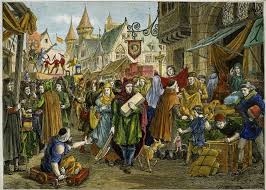
Author Unknown, “Decline of Feudalism”, Feudalism of the Middle Ages, (Uploaded: Unknown), (Accessed: 15 June 2020). Image Source
The implementation of feudalism changed and started to decline during the Middle Ages in Europe. As previously shown, land ownership determined one’s wealth and status in Medieval Europe. This was due to the king distributing land to loyal lords, who would employ knights to protect the kingdom and peasants to produce essential goods. However, after the Black Death, the development of coins and the acceptance of the Magna Carta the system of feudalism was slowly changing and falling apart.
The roots of capitalism can be found in the Black Death, which linked to the decline of feudalism.[45] Prior to the bubonic plague, Europe was overpopulated with limited resources.[46] This enabled the king, lords and knights to force peasants into servitude. However, after the drastic population decline due to the bubonic plague peasants started to demand higher wages and freedom.[47] European rulers reacted harshly to these demands. In 1348 an Ordinance of Labourers was issued which declared that peasants would not be paid higher wages.[48] On the short term the rulers gained from these rules. However, the long-term impact of this decision saw labourers leave the countryside to work in cities, where they could find better opportunities.[49] The population decline alongside with the Ordinance of Labourers saw land fall to waste as it was not cultivated by workers and land-incomes fell.[50] Regardless of the rulers aims to pay peasants the same wages for their work, historians have noted that the government and landlords brought a Sumptuary Law in 1363 that decreed the quality clothing the people on different levels of the feudal system could wear.[51] This proves that wealth increased from higher wages and obtaining land plague victims used to work, as peasants could start to wear similar clothing than their landlords. These changes made it increasingly difficult to enforce the feudal system.
In the 13th century the development and use of coinage started to replace land ownership as the main form of wealth.[52] The lords could now pay taxes to their sovereign, rather than providing military services and the king could distribute money rather than land to ensure the loyalty of his subjects. A rich class of merchants also emerged, who could buy goods from suppliers and sell to customers.[53] This weakened the feudal system which was primarily focused on obtaining wealth through land.
A third blow to the feudal system was the signing of the Magna Carta. In 1215 the nobles made King John sign the Magna Carta, which limited his power as a sovereign by declaring that the king could not imprison anyone without cause and that the king were not exempt from obeying the law.[54] The signing of the Magna Carta inspired nobles to limit the power of their kings.[55] Towards the end of the 17th century the nobles had already created a council, which developed into a Parliament that advised the kings decisions and ensured that people were given fair trials as judges were appointed without interference of the king. [56]
These developments challenged the different levels implemented by the feudal system. The Magna Carta questioned the kings’ unlimited power, while the use of coinage undermined the idea that wealth is linked to land ownership. Finally, the Black Death also started to give rise to the middle classes as people obtained more wealth and moved to urban centres for better futures.
Source Based Questions
The World Around the 1600’s

For the origin of the source, view the footnote below [57].
1. Define the concept “feudal system” in the context of Medieval Europe.
According to the feudal system, that was implemented in Medieval Europe, land ownership determined one’s wealth and position in society. [58] The king owned all the land in the country, which he would divide amongst the church and his loyal subjects, called barons, who swore an oath to him. The barons employed knights to protect the kingdom and gave them personal land to use. Knights employed peasants to work the fields and produce necessary goods.[59]
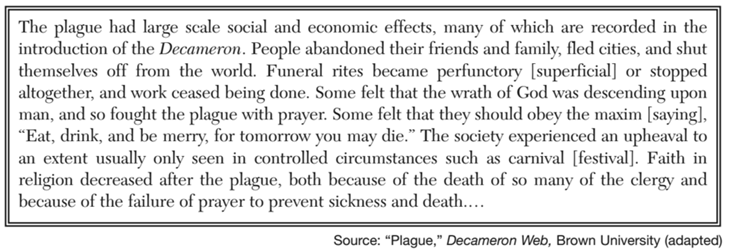 Social and Economic Effects of the Plague in Europe. To view the origin of the source, view the footnote below.[60]
Social and Economic Effects of the Plague in Europe. To view the origin of the source, view the footnote below.[60]
2. Explain the social and economic effects of the Black Death from the exert above.
People became isolated and refused to visit friends and family members. People would not attend funerals and the economy came to a standstill as many people refused to go to work. Ideologies and ideas concerning religion also started to change as people started focusing on enjoying the moment rather than focusing on the afterlife and worshipping God. This was seen in the old saying: “Eat, drink and be merry, for tomorrow you die.”
This content was originally produced for the SAHO classroom by
Ilse Brookes, Amber Fox-Martin & Simone van der Colff
End Notes
[1]Author Unknown, “Feudal System Research Papers”, Paper Masters, (Uploaded: Unknown), (Accessed: 11 June 2020), Available at: https://www.papermasters.com/feudal-system.html
[2] C.N. Trueman, “Feudalism”, History Learning Site, (Uploaded: 25 April 2020), (Accessed: 11 June 2020), Available at: https://www.historylearningsite.co.uk/medieval-england/feudalism/
[3] Ibid.
[4] Ibid.
[5]Author Unknown, “The Feudal System and the Domesday Book”, Bitesize, (Uploaded: Unknown), (Accessed: 11 June 2020), Available at: https://www.bbc.co.uk/bitesize/guides/zdvdmp3/revision/1
[6] Author Unknown, “Women in the 16th, 17th and 18th Centuries: Introduction”, Encyclopedia, (Uploaded 2 June 2020), (Accessed 22 June 2020), Available at: https://www.encyclopedia.com/social-sciences/encyclopedias-almanacs-transcripts-and-maps/women-16th-17th-and-18th-centuries-introduction
[7] N. Worden, J. Bottaro, P. Visser, P. “In Search of History: Grade 10 Learner’s Book”.
[8] Ibid.
[9] Author Unknown, “Women in the 16th, 17th and 18th Centuries: Introduction”, Encyclopedia, (Uploaded 2 June 2020), (Accessed 22 June 2020), Available at: https://www.encyclopedia.com/social-sciences/encyclopedias-almanacs-transcripts-and-maps/women-16th-17th-and-18th-centuries-introduction
[10] A. Hart-Davis (ed.): History The Definitive Visual Guide from the Dawn of Civilisation to the Present Day, 224.
[11] Ibid.
[12] Author Unknown, “Black Death Facts: your guide to “the worst catastrophe in recorded history”, History Extra, (Uploaded: 12 May 2020), (Accessed: 10 June 2020), Available at: https://www.historyextra.com/period/medieval/black-death-plague-epidemic-facts-what-caused-rats-fleas-how-many-died/
[13] Walter S. Zapotoczny, “The Political and Social Consequences of the Black Death, 1348 – 1351”, Wzaponline.com, (Uploaded: Unknown), (Accessed: 10 June 2020), Available at: http://www.wzaponline.com/yahoo_site_admin/assets/docs/BlackDeath.292130639.pdf
[14] Author Unknown, “Black Death Facts: your guide to “the worst catastrophe in recorded history”, History Extra, (Uploaded: 12 May 2020), (Accessed: 10 June 2020), Available at: https://www.historyextra.com/period/medieval/black-death-plague-epidemic-facts-what-caused-rats-fleas-how-many-died/
[15] Ibid.
[16] Walter S. Zapotoczny, “The Political and Social Consequences of the Black Death, 1348 – 1351”, Wzaponline.com, (Uploaded: Unknown), (Accessed: 10 June 2020), Available at: http://www.wzaponline.com/yahoo_site_admin/assets/docs/BlackDeath.292130639.pdf
[17] Ibid.
[18] Ibid.
[19] Ibid.
[20]Ibid.
[21] Ibid.
[22] Walter S. Zapotoczny, “The Political and Social Consequences of the Black Death, 1348 – 1351”, Wzaponline.com, (Uploaded: Unknown), (Accessed: 10 June 2020), Available at: http://www.wzaponline.com/yahoo_site_admin/assets/docs/BlackDeath.292130639.pdf .
[23]Ibid.
[25] A. Hart-Davis (ed.): History The Definitive Visual Guide from the Dawn of Civilisation to the Present Day, 224.
[26] Alastair Dougal, Alice. F.A. Mouton, “Baltic Sea”, Encyclopaedia Britannica, (Uploaded: 30 December 2019), (Accessed: 19 June 2020), Available at: https://www.britannica.com/place/Baltic-Sea
[27] Ibid.
[28] Ibid.
[29] Author Unknown, “Trading Companies”, Encyclopedia, (Uploaded: June 2020), (Accessed: 18 June 2020), Available at: https://www.encyclopedia.com/history/modern-europe/british-and-irish-history/trading-companies
[30] Ibid.
[31] Jessie Szalay, “The Renaissance: The Rebirth of Science and Culture”, Live Science, (Uploaded: 29 June 2016), (Accessed: 11 June 2020), Available at: https://www.livescience.com/55230-renaissance.html
[32] Author Unknown, “Renaissance Art”, Encyclopaedia Britannica, (Uploaded: 5 March 2020), (Accessed: 11 June 2020), Available at: https://www.britannica.com/art/Renaissance-art
[33] Author Unknown, “Renaissance Art”, Encyclopaedia Britannica, (Uploaded: 5 March 2020), (Accessed: 11 June 2020), Available at: https://www.britannica.com/art/Renaissance-art
[34] Jessie Szalay, “The Renaissance: The Rebirth of Science and Culture”, Live Science, (Uploaded: 29 June 2016), (Accessed: 11 June 2020), Available at: https://www.livescience.com/55230-renaissance.html.
[35] Ibid.
[36]Ibid.
[37] Marlee Elkins, “Characteristics of the Renaissance Period”, Classroom, (Uploaded: 27 June 2018), (Accessed: 11 June 2020), Available at: https://classroom.synonym.com/characteristics-of-the-renaissance-period-12079512.html
[38] Jessie Szalay, “The Renaissance: The Rebirth of Science and Culture”, Live Science, (Uploaded: 29 June 2016), (Accessed: 11 June 2020), Available at: https://www.livescience.com/55230-renaissance.html.
[39]Marlee Elkins, “Characteristics of the Renaissance Period”, Classroom, (Uploaded: 27 June 2018), (Accessed: 11 June 2020), Available at: https://classroom.synonym.com/characteristics-of-the-renaissance-period-12079512.html
[40] Jessie Szalay, “The Renaissance: The Rebirth of Science and Culture”, Live Science, (Uploaded: 29 June 2016), (Accessed: 11 June 2020), Available at: https://www.livescience.com/55230-renaissance.html
[41] Ibid.
[42] Ibid.
[43] Marlee Elkins, “Characteristics of the Renaissance Period”, Classroom, (Uploaded: 27 June 2018), (Accessed: 11 June 2020), Available at: https://classroom.synonym.com/characteristics-of-the-renaissance-period-12079512.html
[44]Jessie Szalay, “The Renaissance: The Rebirth of Science and Culture”, Live Science, (Uploaded: 29 June 2016), (Accessed: 11 June 2020), Available at: https://www.livescience.com/55230-renaissance.html.
[45] Walter S. Zapotoczny, “The Political and Social Consequences of the Black Death, 1348 – 1351”, Wzaponline.com, (Uploaded: Unknown), (Accessed: 10 June 2020), Available at: http://www.wzaponline.com/yahoo_site_admin/assets/docs/BlackDeath.292130639.pdf
[46] Ibid.
[47]Ibid.
[48] Tom James, “The Black Death: The Lasting Impact”, BBC History, (Uploaded: 17 February 2011), (Accessed: 15 June 2020), Available at: http://www.bbc.co.uk/history/british/middle_ages/black_impact_01.shtml
[49] Mark Cartwright, “Feudalism”, Ancient History Encyclopedia, (Uploaded: 22 November 2018), (Accessed: 15 June 2020), Available at: https://www.ancient.eu/Feudalism/
[50] Tom James, “The Black Death: The Lasting Impact”, BBC History, (Uploaded: 17 February 2011), (Accessed: 15 June 2020), Available at: http://www.bbc.co.uk/history/british/middle_ages/black_impact_01.shtml
[51]Ibid.
[52] Mark Cartwright, “Feudalism”, Ancient History Encyclopedia, (Uploaded: 22 November 2018), (Accessed: 15 June 2020), Available at: https://www.ancient.eu/Feudalism/
[53] Ibid.
[54] Author Unknown, “Magna Carta” , Decline of Feudalism, (Uploaded: Unknown), (Accessed: 15 June 2020), Available at: https://tonynatalie.weebly.com/magna-carta.html
[55] Ibid.
[56] Ibid.
[57] Image Source: Author Unknown, “Feudal System Research Papers”, Paper Masters, (Uploaded: Unknown), (Accessed: 11 June 2020), Available at: https://www.papermasters.com/feudal-system.html
[58] Author Unknown, “Feudal System Research Papers”, Paper Masters, (Uploaded: Unknown), (Accessed: 11 June 2020), Available at: https://www.papermasters.com/feudal-system.html
[59] Author Unknown, “The Feudal System and the Domesday Book”, Bitesize, (Uploaded: Unknown), (Accessed: 11 June 2020), Available at: https://www.bbc.co.uk/bitesize/guides/zdvdmp3/revision/1
[60] Migliore, “The Black Death DBQ Scaffolds”, Miss Migliore’s Classroom, (Uploaded: 11 February 2016), (Accessed: 21 June 2020), Available at: https://sites.google.com/a/dansvillecsd.org/migliore/lessons-1/unit-3/the-black-death-dbq-scaffolds